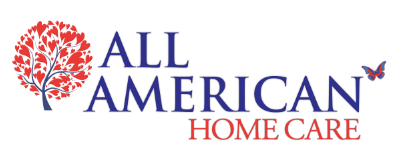Primary vs Secondary Caregiver

Primary Caregiver Support and Resources
Depending on the severity of the needs, caregiving often requires both primary caregivers and secondary caregivers to manage the recipient’s needs. Many see being a primary or secondary caregiver for a family member as a benefit both for themselves and for the care recipient.
Often, you’ll need more than 16 weeks of paid time off to care for a loved one who may be on disability leave or care for a parent with a chronic condition. Paid family leave and paid parental leave are required to be offered by law and the human resources department of the company you work for should be able to help you. If you are new to this and seek information on how to become a caregiver, check out our resources for a comprehensive understanding.
The Equal Employment Opportunity Commission has guidelines that make it illegal for businesses to discriminate against a primary caregiver. However, not everyone can afford unpaid leave. Luckily, lawmakers have taken note, creating programs to support a primary caregiver. Understanding what type of caregiver you (primary vs. secondary caregiver) can help you understand how to maximize any state programs of support.
What is a Primary Caregiver?
A primary caregiver is someone who has the main duty of caring for a loved one who cannot care for himself or herself. Primary caregivers may care for an elderly loved one, children, or even a spouse and they help with daily activities. Primary caregivers may not require any professional training and many states have programs to help compensate for the time and needs these roles take up in someone’s life as a result of not having time to devote to another job or role outside of the home. In some situations where the needs are greater, professional caregivers may act as a primary caregiver as well.
What is a Secondary Caregiver?
A secondary caregiver is someone who assists and fills in when the primary caregiver is unavailable. They may be a regular caregiver for the care recipient, but not necessarily the one doing the majority of the care load. They also may be a respite care situation that may be more sporadic and used as needed. The roles and responsibilities vary significantly between a primary and secondary caregiver, and further information can be found in our detailed exploration of Caretaker vs. Caregiver.
The needs around a secondary caregiver are often based on the severity of needs of the care recipient as well as the family. Also, schedules and the workload of the primary caregiver are a huge factor in how much secondary care support may be needed.
Each state has regulations and programs to support caregivers who find themselves in these roles. For family members who are thrust unexpectedly into these roles, there are resources to help. For professionals who are trained in caregiving, there are also many companies and resources to help match you with the right caregiving situation including weeks of paid time off, human resources, bonuses, and more.
If you find yourself in a situation where you, or a family member, is acting in a major caregiving role as a primary caregiver, or even secondary caregiver, it is worth noting that there are resources within your state that may help you out.
The Pennsylvania Caregiver Support Program
When paid family leave runs out, the burden of caring for a loved one can be a heavy one to bear. The Pennsylvania Caregiver Support Program works to alleviate the stress associated with caregiving by focusing on the well-being of the primary caregiver, providing access to resources such as respite care and by providing financial reimbursement for out-of-pocket expenses associated with caregiving.
The program is administered by your local Area Agency on Aging. Each primary caregiver is assigned a care manager, who comes to the care receiver’s home to conduct a comprehensive assessment of the needs of the caregiver, provide support, and to work with them to develop a person-centered plan of care.
Available Services in the Pennsylvania Caregiver Support Program
Services through this program include:
- Care management
- Benefits counseling
- Caregiver education and training
- Reimbursement for ongoing expenses for caregiving-related services or supplies such as:
- Respite care
- Consumable supplies
- Supportive services
- Supplemental services
- Home modifications
- Assistive devices
- Services specific to grandparents/older relative caregivers (55+)
Eligibility for Caregiver Support
There are three categories of eligibility as a caregiver. In order to be eligible you must meet all of the requirements in a particular category, plus the caregiver and care receiver must both be a resident of Pennsylvania.
Category 1
This category is for those caring for an individual with functional deficits or a disease such as Alzheimer’s.
The primary caregiver is:
- An individual 18 years or older
The care receiver is:
- An individual age 60 or older with functional deficits or
- An individual of any age with Alzheimer’s or related disorder
*In this category, the caregiver and care receiver are not required to be related or live in the same residence.
Category 2
An example of those who qualify for this category include adoptive parents.
The caregiver is:
- An individual age 55 and older
- Not the biological parent or the child(ren)
- Related by blood, marriage or adoption
- Has legal guardianship, or is raising the child(ren) informally
The care receiver is:
- A dependent child under the age of 18
*In this category, the caregiver and care receiver must live in the same residence.
Category 3
This category is for those who care for someone with a disability.
The caregiver is:
- An individual age 55 or older
- Related by blood, marriage or adoption
- Can be the biological parent
The care receiver is:
- An individual age 18 to 59 with a disability
*In this category, the caregiver and care receiver must live in the same residence.
Financial Eligibility
With this program, there are no financial eligibility requirements. However, the amount of reimbursement is based on the total gross income and household size of the care receiver. The percentage is determined using a sliding scale based on the current Federal Poverty Level (FPL) guidelines and covers care receiver household income up to 380% of the FPL.
How to Apply for the Pennsylvania Caregiver Support Program
For more information or to apply for the Caregiver Support Program, use the Area Agency on Aging Locator to find the AAA serving your local county.




